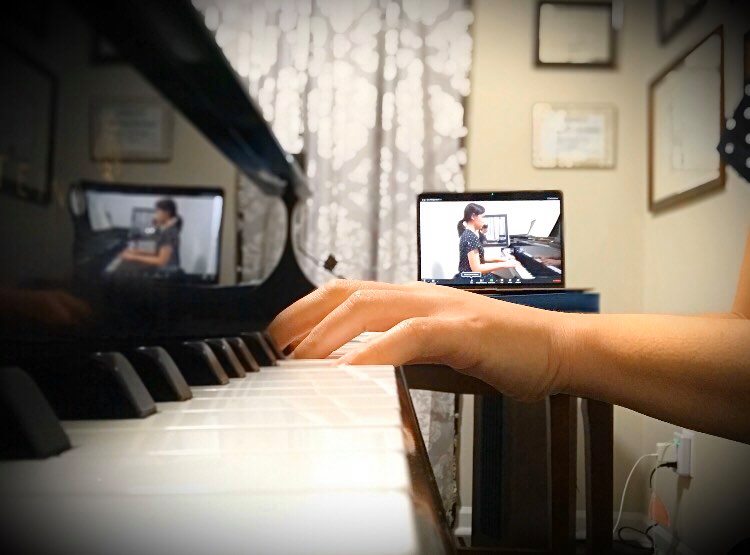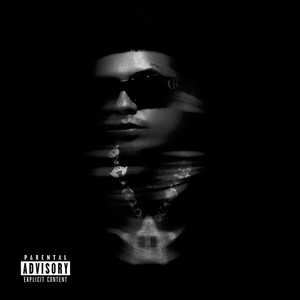The challenges (and benefits) of virtual piano lessons during the pandemic
Photo courtesy of pianolessons.us
Due to COVID-19, many piano lessons have shifted to a virtual format.
Rebecca Happel, applied instructor of music and piano lecturer of Oakland University, was conducting a piano lesson over Zoom. She counted while her student played, but the student was constantly a second or two behind her because of the slight lag of the sound.
With the onset of COVID-19 in March of 2020, piano teachers and students have had to adapt to new safety protocols. Lessons look different than prior to the pandemic — and for many, lessons are relieving stress from it.
Before COVID-19 concerns, many piano lessons consisted of a teacher and a student in the same room. In some cases, such as in the studios at OU, there are two pianos side by side with the keyboards flush to each other so the pair can play together.
Following COVID-19, OU’s music classes went virtual, and students could no longer use the studios. Happel explains the difficulties of conducting private lessons via Zoom — figuring out how to maintain the consistency of sound was, and continues to be, a challenge.
“There were so many hacks going around about how to keep the sound consistent, because I think the default setting on Zoom is to equalize the sound,” Happel says. “What happens when you’re playing piano is the instant you play sound, the sound goes away via Zoom, and so there had to be these hacks to tweak and select certain things, different kinds of microphones, to defeat that and to allow the sound to go through.”
Camera angles on Zoom were another obstacle for piano lessons. In the classroom setting, the teacher can see the student’s whole body to correct posture and movement, but over Zoom, the teacher can usually only see the keyboard, or just part of it.
“Sometimes, if the student chooses to do their lesson in one of our practice rooms, there’s not enough space between the wall and the keyboard to see the entire keyboard — certainly not the entire student, so we couldn’t see what’s happening with their pedal, or if I was trying to figure out if somebody memorized their music, I couldn’t see their face so I couldn’t tell if they were looking at their score or not,” Happel says.
Internet connection also posed a challenge and caused sound lags over Zoom, so for studio classes where multiple students joined the professor, they adapted to pre-recording their playing for the class to listen to and comment on together.
When the university returned to in-person classes, the studios were retrofitted with rollable plexiglass frames stationed between two pianos. While the students and teachers could then see each other, they were discouraged from being in proximity of one another.
The piano practice rooms at OU are in the same hallway, and the sound proofing is not ideal between rooms, according to Happel. However, the noise can build a student’s concentration, and it also allows them to be surrounded by other pianists whom they can ask questions if needed.
“It was different for every student,” Happel says. “I do know students who absolutely flourished. They were at home and they were more comfortable with their home piano. They seem to get more work done, which was not something I guess we all anticipated […] There was a lot more time, but I think some people found it also demotivating because there’s an aspect of competition that was gone […] But like I said, some people found that freeing — they just really hunkered down like ‘What else am I going to do? I’m just going to practice.’”
The Rochester Conservatory of Music (RCM), a community music school that offers private lessons and group classes for 12 different instruments for students of all ages, was also completely virtual during the bulk of the pandemic.
“One of our takeaways from the virtual lesson experience is that it will now remain a permanent option at the Rochester Conservatory,” owner and Director of RCM Kay Ellen Wilkins says. “If a student is not feeling well enough to come in for a lesson, we can easily jump online — we are able to teach during snow days, eliminating the need for makeup lessons due to bad weather.”
RCM faced similar issues of spotty Wi-Fi, difficulty hearing nuances in music and rough sound quality, but navigated virtual lessons nonetheless.
“The students kept progressing, they had a creative outlet during a very stressful time and it was a pleasure every week to see their shining faces through the screen,” Wilkins says.
The creative outlet acted as a relief for many students with increased stressors from COVID-19. The Centre for Studies on Human Stress found that playing the piano reduces cortisol — the stress hormone — more than other creative art activities.
The study concludes: “[…] music performance showed the same effect as listening to music. With all the stresses of modern society, music education in school has a new purpose: the improvement of mental health […] Music facilitates expression, communication and relationships in a non-verbal context.”
According to Wilkins, the RCM did not see an increase in new students during the first year of the pandemic, and parents said their students took breaks from lessons because of overwhelming changes such as working from home, schooling from home and staying in isolation.
However, new student inquiries — especially for in person teaching — picked up during the second year of the pandemic, and currently, RCM is back to their normal rate of new student inquiries.
“One area that does seem to be on the rise is an increase in our adult students,” Wilkins says. “Perhaps the pandemic has caused many adults who have had their jobs change due to the pandemic — I’ve heard that many companies are offering more days at home working virtually — realize now is the time to do something they’ve always wanted to do. Music is a terrific outlet for students of all ages.”








